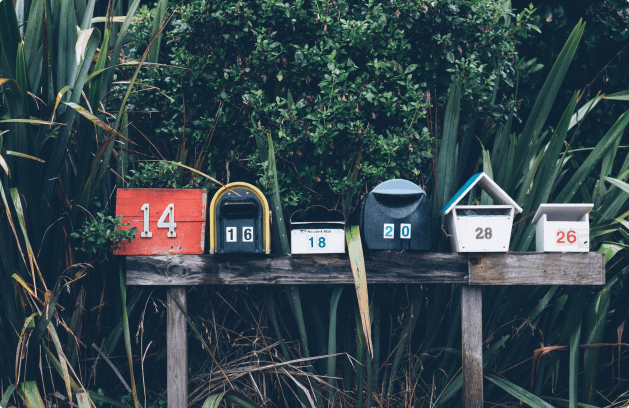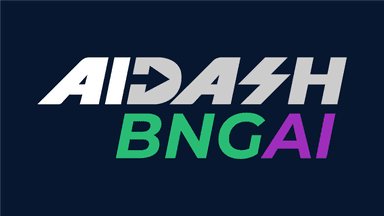BNG Compliance: What developers need to do and how AiDash can help
Limited-time offer!
Share this post
If you are looking to meet the BNG application requirements that are taking effect February 12, clicking on the AiDash BNG compliance portal — BNGAI — was a good call. Here, you’ll find information about BNG requirements and updates, and getting started on your own BNG applications.
AiDash can help you to streamline and speed the process, saving time and resources. Below is a snapshot of steps and challenges of the application process and how AiDash can get you through it all, quickly and accurately.
- Step 1. Conduct preliminary baseline assessment.
- Step 2. Generate BNG baseline report.
- Step 3. Consider post-development scenarios.
- Step 4.Create post-development BNG action plan.
- Step 5. Produce submission-ready files.
- Step 6. You’re ready to submit!
Step 1. Conduct preliminary baseline assessment.
The first step is to take a preliminary survey of your intended development site’s indicative biodiversity value and produce a biodiversity baseline and habitat map. For the survey, AiDash draws from a current high-resolution satellite image and other available resources, such as aerial imagery, as well as public and licensed data layers. This information is then compiled to produce a preliminary baseline map and record which you can access via the portal to:
- Provide a base ecological survey map, which is required at subsequent application stages.
- Identify any priority or irreplaceable habitats, if present: for example, ancient woodlands or veteran trees.
- Support the understanding of types of habitats on your site and offer an initial view into the locational risks, challenges, and opportunities.
- The accuracy of baseline GIS habitat maps is key to biodiversity net gain calculations. The first part of the statutory biodiversity metric concerns the “area” of each habitat and involves accurately defining the boundaries of such habitats, which is essential for BNG unit accounting.
- Similarly, your preliminary survey should also assign irreplaceable habitats and identify the strategic significance for each habitat to derive the BNG accounts from public records.
- A habitat map and data search can take time to compile. The lengthy process can delay field surveys, as the compilation must be in hand for your ecologist (or other qualified individual) to validate findings.
AiDash BNGAI: AiDash’s AI technology defines land parcel boundaries and classifies land consistent with Statutory Biodiversity Metric specifications and with high precision. The back-end database quickly populates records with public and licensed datasets — defining your habitat map and adding key designations and significance data. An automated preliminary survey report provides the BNG valuation using assumed condition levels to provide an indicative value. You can use the map and report to quickly assess the risks and opportunities for development and provide the initial stage of assessment prior to a site visit.
Start your submission here.
Step 2. Generate BNG baseline report.
A competent person — i.e., your ecologist or an ecologist working with AiDash — must visit your site to make sure reporting is refined and updated with habitat condition information and the map is verified.
- Habitat condition surveys are standard for BNG assessments, and this process can be complex and time-consuming, depending on the number of habitats.
- It’s not just an assessment! Surveys typically gather information to enable a biodiversity baseline report to be produced, including:
- Notes regarding flora, fauna, and invasive species.
- Evidence gathering that could influence how the land could be managed differently.
- Any indicators of protected wildlife species.
AiDash BNGAI: The portal can ingest all related data reports, keeping all the related material in one central location, and you can assign and share information with your preferred ecologists. AiDash Biodiversity Net Gain Management System (BNGAI) provides a mobile app, so the ecologist can easily transfer information (map and all habitat data) to the field for verification, use the built-in condition assessment, add target notes and images to capture all the related information, and compile it in the portal — saving time and lots of paper shuffling.
Plus, the portal will digest all the collected data to finalise an accurate biodiversity baseline value and support the production of a biodiversity baseline report (using inbuilt templates). Although much of the process saves time using our state-of-the-art BNGAI software tool, your ecologist’s insight will be vital. AiDash simply speeds the legwork to free your ecologist to guide interpretation and reporting.
Start your submission here.
Step 3. Consider post-development scenarios.
Your architect will typically be creating your development plans showing structures, roadways, and other elements design programs, such as AutoCAD. The post-intervention design will illustrate changes your plans make to the habitat. That information must be reconciled with the biodiversity baseline report and map you have just created. The object is to show what areas of biodiversity/habitat your development will be eliminating and where you can plan to restore or boost biodiversity to ensure you meet the statutory 10% BNG requirement.
- Getting programs to talk to each other is notoriously difficult. The manual process of melding the architect’s rendering with the biodiversity map and adjusting plans to benefit both the development and BNG efforts is technically challenging and time-consuming.
- Modifications to designs may be needed to avoid priority habitats and an iterative process of refining the development and impact evaluation may be necessary.
AiDash BNGAI: The portal is set up to accept various architecture software applications and consider the biodiversity baseline map. In fact, you can position the architectural elements on top of the map to view exactly how the development will affect the habitat. Edits to both can be made in real time to visualise the changes to alleviate BNG losses. The portal comes equipped with several planning tools, so you can test how your plans may impact habitats. The features have been designed to simplify this process and make it easy to produce a “what if” scenario in minutes. Several scenarios can be generated and saved, providing options as you finalise designs.
Start your submission here.
Step 4.Create post-development BNG action plan.
An ecologist will need to approve all your BNG plans to support an application, including your strategy for meeting BNG mandates. These approved elements are combined to form your post-development BNG action plan.
As you work to compensate for biodiversity loss and achieve 10%BNG, you have three options:
- Improve or restore biodiversity in the non-developed areas of your site.
- If on-site enhancements are not enough, you can make improvements to other sites that you own or buy off-site biodiversity credit on the market.
- As a last resort, statutory biodiversity credits can be purchased from the government.
When you’ve determined your direction, and your ecologist has signed off on all application components, the work must be submitted to your local planning authority.
- If you do not have an ecologist on your team, you risk presenting enhancements and habitat creations that are not likely to be as successful as planned.
- Recommendations need to be ecologically sound and a competent person (usually an ecologist must review the plans, or they won’t pass planning requirements.
AiDash BNGAI: We provide the tools you need for BNG planning. We will also provide an ecologist who will have access to the tools and your reports to help you ensure accuracy for your application and a successful submission.
Step 5. Produce submission-ready files.
Your local planning authority may require a few edits to your application before your final submission. Along with those updates, you will be responsible for providing evidence to support your plan to ensure biodiversity net gain is progressing in accordance with your approved BNG application over the subsequent 30-year period.
The BNGAI platform is set up to generate reports as you need them throughout the application process, including shapefiles that present your site before and after development, as well as monitoring reports after BNG application approval.
- The BNG application is a formal agreement with the LPA. In some cases, you may engage an LPA before the final application is submitted to ensure your plan is aligned with local conservation goals.
- After your application has been approved you will have obligations to supply monitoring reports at varying frequencies and provide a monitoring plan.
- Evidence tracking and progress reporting is essential in maintaining a record of the activities through the life cycle of the BNG program.
AiDash BNGAI: BNGAI provides a record retention system that stores your whole history of pre and post development as well as monitoring records and acts as a live audit record. You can share information at any time and with any stakeholder. No additional licenses are required. It’s your data to manage how you see fit.
The BNGAI portal is active for as long as you need it. It can provide you with alerts to pending actions, track the progress from monitoring activities, and continually add information over time to show compliance with planned obligations. Furthermore, AiDash can undertake additional mapping surveys at pre-scheduled times in the future to show how the habitats have evolved.
Start your submission here.
Step 6. You’re ready to submit!
From your BNG plan, metric calculations, and condition assessments to post-development mapping and your final habitat management plan, your BNG application requires that you compile a bevy of reports to submit to your local planning authority.
Thanks to the BNGAI application process you are ready! Simply download your files and submit them to your LPA.
- Calculations — ecological enhancement/creation and maintenance of biodiversity improvements, as well as determining which habitat areas can be enhanced, by how much, and in what timeframe — can be complex and could lead to human error.
- Ensuring that all application forms and agreements are fully completed and accurate adds more responsibility on your ecologist’s shoulders.
AiDash BNGAI: Use BNGAI to collate all related material and, after a final BNG post-intervention plan has been developed, your ecologist can use reporting templates with pre-populated data, imagery, maps, and so forth to develop the necessary reports. The portal can automatically produce results from the Statutory Biodiversity Metric calculation tool (an Excel report) for the development plan.
Start your submission here.
Share this post
Complete your first BNG project for FREE (a £2299 value)
Complete BNG Workflow
Preliminary BNG assessment
BNG baseline report
Post-development scenarios
Post-development BNG action plan
Info shared with LPA planners
Support for your BNG planning submission
Field validation by AiDash partner ecologist
Total amount
£2299.00
Limited offer: First project is FREE!
Read More
BNG Compliance: What developers need to do and how AiDash can help
Am I working with an irreplaceable habitat?
Review the statutory irreplaceable habitats list and identify developer responsibilities
BNG at a glance: What developers need to know now
Here’s what to keep in mind to ensure that projects are in compliance
Stay updated with our newsletter
Get the latest updates and news delivered straight to your inbox.

